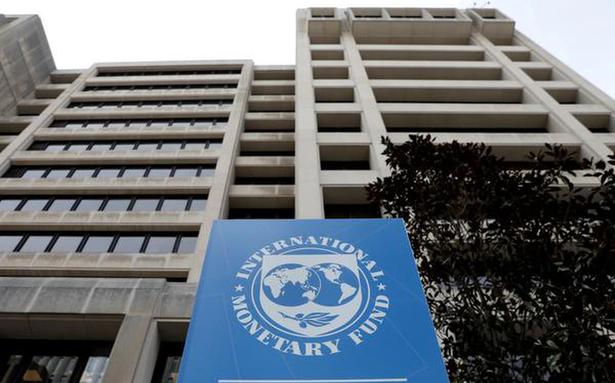Growth forecasts for the world and most major economies downgraded from the Fund’s January forecast
Growth forecasts for the world and most major economies downgraded from the Fund’s January forecast
India is expected to grow 8.2% in the current fiscal year and 6.9% next year, according to the International Monetary Fund’s latest World Economic Outlook (WEO) released on Wednesday. While India is expected to be the fastest-growing major economy over the next two years, the forecast, which has increased since January, has been revised down significantly by 0.8 percentage points due to the economic impact of the war between Russia and Ukraine.
Growth forecasts for the world and most major economies have also been downgraded since the IMF’s January forecast due to the war. World production is projected to grow by 3.6% this year and next, from a growth rate of 6.1% in 2021.
The IMF says Japan and India are seeing “notable” downgrades in growth forecasts for the Asia region, in part on lower net exports and weaker domestic demand, with higher oil prices expected to weigh on consumption and investment.
“The war in Ukraine has unleashed a costly humanitarian crisis that requires a peaceful solution,” said the report, which forecasts a massive 35% drop in Ukraine in 2022. The conflict will not only contribute to a “significant slowdown” in 2022, but also inflation — via trade, commodity markets and financial channels.
Higher food and fuel prices are affecting vulnerable populations, and interest rates are rising as central banks tighten monetary policy, the IMF said. Additionally, the global economy is becoming fragmented as countries sever ties with Russia, “rules-based frameworks” are threatened and pandemic-related lockdowns in China exacerbate supply chain disruptions.
“We see a significant downgrade of 0.8 percentage points in our growth estimates for India for 2022 [ FY22-23], IMF Research Director Pierre-Olivier Gourinchas said at a virtual news conference on Wednesday. India suffered “like many other countries from the aftermath of the war and the adverse terms-of-trade shock” as higher food and energy prices weighed on trade balances. Second, external demand also weakened as growth in the rest of the world was hit, Mr Gourinchas said.
The US is forecast to grow 3.7% (calendar 2022) and 2.3% (calendar 2023), a 0.3 percentage point downgrade since January’s WEO. The January forecast was already downgraded due to disrupted supply chains and because the “Build Back Better” infrastructure package was not approved by the US Congress. A minor additional downgrade has been made since January as the Fed withdraws policy support and tightens monetary policy and US trading partners are hit by war-related disruptions.
Growth of 2.8% and 2.3% is expected for the euro zone this year and next. Most European countries will experience a negative shock to their terms of trade from higher energy prices. In addition, they are also feeling the effects of broken supply chains. According to the IMF, downgrades in the entire eurozone will be offset by fiscal expansion. Russia, under pressure from sanctions, is expected to shrink by 8.5% this year and 2.3% next.
. China – after growing 8.1% in 2021 – is expected to decline to 4.4% this year, followed by 5.1% next year. Private consumption in China was negatively impacted by repeated lockdowns and a weak recovery in urban employment. Real estate investment growth also slowed.
The global ramifications of the Russian invasion of Ukraine are expected to work through multiple channels. First, the price of raw materials increases. Second, direct effects to the extent that countries have trade relations with Russia or Ukraine. Third, by disrupting cross-border production networks (e.g. neon gas production, an input for silicon chips is concentrated in Russia and Ukraine according to the IMF). Fourth, sanctions


